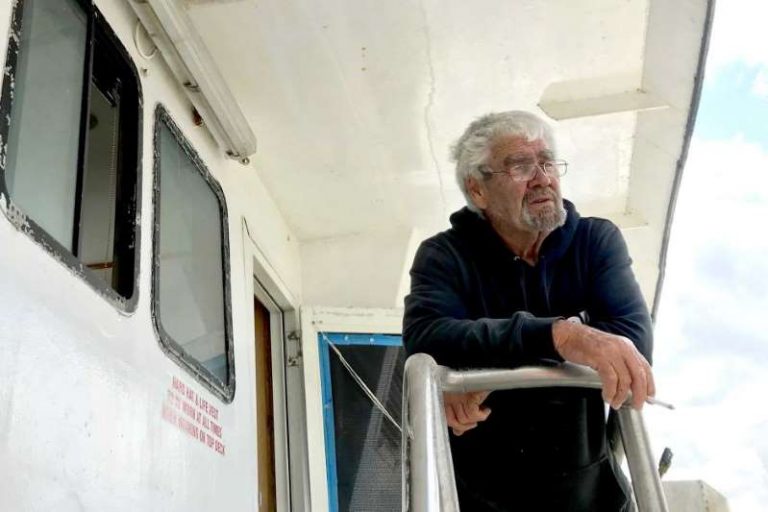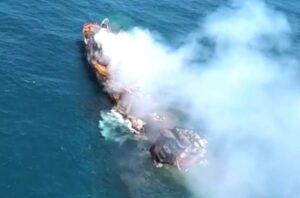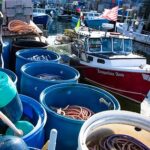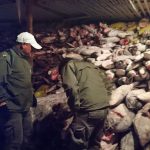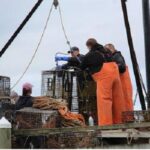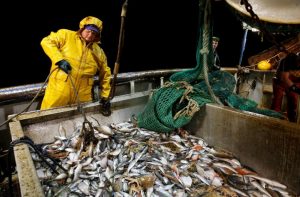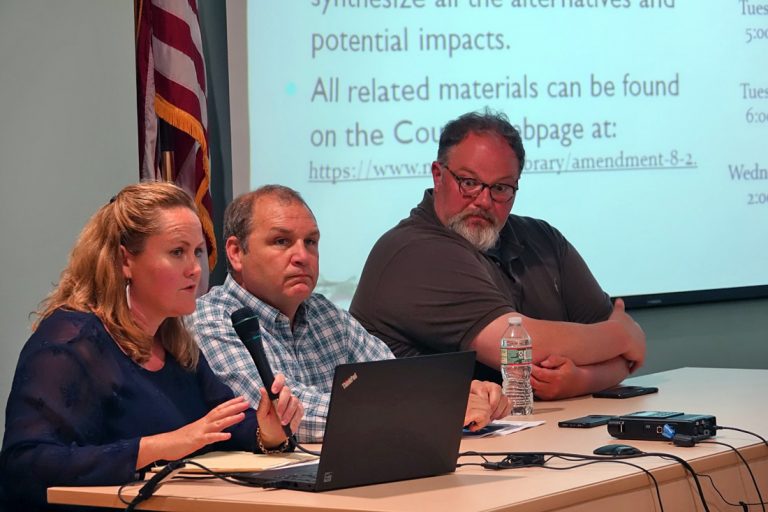Daily Archives: February 19, 2017
Groundfish Monitoring: New England Council Seeks Initial Input on Amendment 23 at Six Scoping Hearings in March
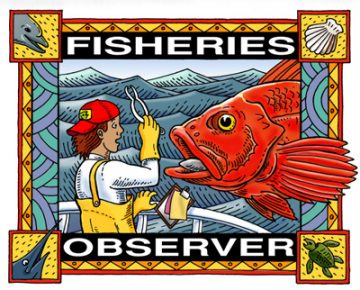 The New England Fishery
The New England Fishery
Chesapeake Bay advocates alarmed by plan that could open oyster sanctuaries to watermen
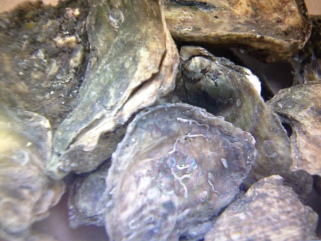 Some of the Chesapeake Bay’s most densely populated oyster sanctuaries could be opened to periodic harvesting under a plan being floated by state officials, setting up more conflict between alarmed environmentalists and watermen seeking to make a living. Neither side is pleased with the first draft of a new map of sanctuary boundaries in Maryland’s share of the bay. While watermen would gain some territory they ceded when a state oyster restoration strategy launched in 2010, dredging would be banned in other areas that are now open to harvesting. The net effect would be a loss of 11 percent of oyster sanctuary, instead opening up that acreage to watermen for undetermined stretches of time once every few years. Gov. Larry Hogan’s administration has supported what it calls “rotational harvesting” as a way to balance oyster recovery and bay restoration with the demands of the seafood industry. Continue reading the article here 15:17
Some of the Chesapeake Bay’s most densely populated oyster sanctuaries could be opened to periodic harvesting under a plan being floated by state officials, setting up more conflict between alarmed environmentalists and watermen seeking to make a living. Neither side is pleased with the first draft of a new map of sanctuary boundaries in Maryland’s share of the bay. While watermen would gain some territory they ceded when a state oyster restoration strategy launched in 2010, dredging would be banned in other areas that are now open to harvesting. The net effect would be a loss of 11 percent of oyster sanctuary, instead opening up that acreage to watermen for undetermined stretches of time once every few years. Gov. Larry Hogan’s administration has supported what it calls “rotational harvesting” as a way to balance oyster recovery and bay restoration with the demands of the seafood industry. Continue reading the article here 15:17
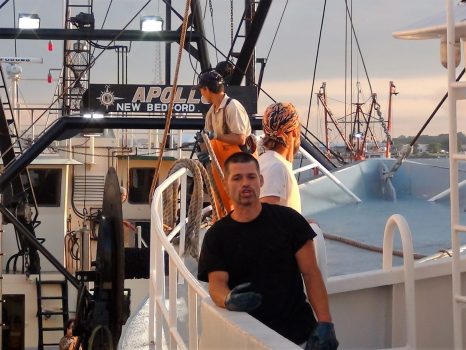
A look back at the evolution of Catch Shares
In 2010 CSF board member Nils Stolpe conducted some exhaustive research into catch shares as a management tool and given what has transpired since it is worth looking over his findings today. Here, for example is a prophetic quote from the NEFMC’S June 2010 Draft Environmental Impact Statement for Amendment 15 to the Council’s Sea Scallop Fishery Management Plan : “…consolidation measures like ITQs, but also more generally leasing and stacking, tend to have their negative impacts on those less powerful segments of the fishing industry, namely the crew, or the small business owners without a fleet of vessels or vertically integrated business. Those who are better able to take advantage of measures like leasing or stacking are then increasingly able to exert control in various markets, such as leasing quota, hiring crew, or even affecting prices that fishermen receive for their product. These kinds of changes, in turn, affect the structure of communities—through changing relations between people and shifts in dominant values—and affect the viability of fishing communities as some are disproportionally impacted by geographic shifts in fishing businesses.” That was about the scallop fleet but the impact is now decimating single boat owners in our New England groundfishery. The complete report (three papers) is included here 14:28

The Five Trillion Dollar Plan to Save the Arctic Ice
Just in case you thought the climate community had run out of absurd ideas to waste taxpayer’s money, here is an academic plan to rebuild Arctic ice, by deploying 100 million wind turbines into the Arctic Ocean. Save the Arctic with $5 trillion of floating, wind-powered ice machines, researchers recommend With the Arctic warming faster than anywhere else on Earth, a new scientific paper is proposing a radical scheme to thicken the ice cap: millions upon millions of autonomous ice machines. Specifically, between 10 and 100 million floating, wind-powered pumps designed to spray water over sea ice during the winter. In the most ambitious version of the plan, 100 million devices would be deployed across the Arctic,,, Continue to read the absurdity here! 12:33
New York Wind farm’s long-term cost will be high for power projects
 When Gov. Andrew M. Cuomo in a speech last month touted an offshore wind farm 30 miles from the coast of Long Island, he made special note of its “inexpensive energy,” saying it would “drive the economy.” While the project by developer Deepwater Wind promises many many benefits, including meeting LIPA’s green-energy goals and the state’s Clean Energy Standard, it’s hard to make the case that the power it produces will be inexpensive. Power from the current crop of natural-gas fueled plants on Long Island costs around 7.6 cents per kilowatt hour. Commercial fishing groups have generally opposed offshore wind energy, but a Siena College poll last month found 76 percent of Long Islanders supported the concept when the projects were 10 miles or more miles from shore. Read the story here 12:03
When Gov. Andrew M. Cuomo in a speech last month touted an offshore wind farm 30 miles from the coast of Long Island, he made special note of its “inexpensive energy,” saying it would “drive the economy.” While the project by developer Deepwater Wind promises many many benefits, including meeting LIPA’s green-energy goals and the state’s Clean Energy Standard, it’s hard to make the case that the power it produces will be inexpensive. Power from the current crop of natural-gas fueled plants on Long Island costs around 7.6 cents per kilowatt hour. Commercial fishing groups have generally opposed offshore wind energy, but a Siena College poll last month found 76 percent of Long Islanders supported the concept when the projects were 10 miles or more miles from shore. Read the story here 12:03
Saving the whales – 19th-century hunting techniques now used to help, not kill humpbacks
 To save whales tangled in netting and debris, rescuers take a page right out of the 1850s whale-hunting playbook. To catch and kill the animals, 19th-century whalers would harpoon the creatures, add a barrel to the line to slow and force them to surface. Then they’d lance captured whales and let them bleed out. Now, rescuers follow similar but nonviolent steps — tossing a hook to catch the debris on a whale, adding a buoy to slow it and using a knife rigged on a pole to cut away entangled fishing gear or other marine debris. Instead of a barrel of oil, their reward is watching the whale swim free. “We stole it from whalers in the 1850s,” said Ed Lyman, large whale entanglement response coordinator with the Hawaiian Islands Humpback Whale National Marine Sanctuary. “Here we are using their technique to actually save whales.” Continue reading the story here 09:58
To save whales tangled in netting and debris, rescuers take a page right out of the 1850s whale-hunting playbook. To catch and kill the animals, 19th-century whalers would harpoon the creatures, add a barrel to the line to slow and force them to surface. Then they’d lance captured whales and let them bleed out. Now, rescuers follow similar but nonviolent steps — tossing a hook to catch the debris on a whale, adding a buoy to slow it and using a knife rigged on a pole to cut away entangled fishing gear or other marine debris. Instead of a barrel of oil, their reward is watching the whale swim free. “We stole it from whalers in the 1850s,” said Ed Lyman, large whale entanglement response coordinator with the Hawaiian Islands Humpback Whale National Marine Sanctuary. “Here we are using their technique to actually save whales.” Continue reading the story here 09:58
White spot threat: is fishing finished in Queensland?
 The Logan River white spot epidemic could destroy all mainland fishing in Queensland, including a big slice of the Cooloola Coast seafood and tourism economy, industry leader Kev Reibel has warned. A Queensland Seafood Industry Association board member and Tin Can Bay trawler operator, Mr Reibel said the threat was credible and immediate. “To say we are worried would be something of an understatement,” he said in an exclusive interview with The Gympie Times on Sunday. “We don’t know if it can be stopped and we don’t know its boundaries within the crustaceans, or even if it has any boundaries. If it affects crabs, that’s another industry and another tourism factor wiped out. He backed claims by industry environmental adviser and Bay net fishing operator Joe McLeod that the apparently unstoppable virus is a threat to the food chains which sustain all kinds of fin fishing. Mr McLeod said the plankton that kicked off the fin fish food chain included juvenile prawns and other crustaceans. “If they’re not there, there is nothing for the fish to eat,” Mr McLeod said yesterday. Both said there was a fearful lack of knowledge of the virus’ boundaries, especially with the crustacean group. Continue reading the story here 09:32
The Logan River white spot epidemic could destroy all mainland fishing in Queensland, including a big slice of the Cooloola Coast seafood and tourism economy, industry leader Kev Reibel has warned. A Queensland Seafood Industry Association board member and Tin Can Bay trawler operator, Mr Reibel said the threat was credible and immediate. “To say we are worried would be something of an understatement,” he said in an exclusive interview with The Gympie Times on Sunday. “We don’t know if it can be stopped and we don’t know its boundaries within the crustaceans, or even if it has any boundaries. If it affects crabs, that’s another industry and another tourism factor wiped out. He backed claims by industry environmental adviser and Bay net fishing operator Joe McLeod that the apparently unstoppable virus is a threat to the food chains which sustain all kinds of fin fishing. Mr McLeod said the plankton that kicked off the fin fish food chain included juvenile prawns and other crustaceans. “If they’re not there, there is nothing for the fish to eat,” Mr McLeod said yesterday. Both said there was a fearful lack of knowledge of the virus’ boundaries, especially with the crustacean group. Continue reading the story here 09:32
For fisheries regulations, a Trump edict signals uncertainty
 New England fishermen and conservationists fear one of President Trump’s executive orders will have disruptive effects on fisheries management, although it will not affect routine seasonal fisheries regulation, as some had initially feared. The order prompted a fiery letter three days later from two prominent Democratic congressmen pointing out it could have “devastating impacts on commercial and recreational fisheries and the businesses and communities they support.” “Effectively what it means is that nobody can do anything because agencies will have to stop doing major regulatory actions because you can’t comply with this order, which may be the point,” says a former top federal fisheries management official, Andrew Rosenberg, who is now director of the Center for Science and Democracy at the Union of Concerned Scientists. Drew Minkiewicz, a Washington, D.C., lawyer representing larger Eastern Seaboard scallop fishermen, says fishermen need not be concerned about most regulations. “This executive order has zero impact on 99.9 percent of the fishing regulations going out, so people who are wondering if the fishing season will be delayed don’t need to,” he says. “It’s much ado about nothing.” Read the article here 08:39
New England fishermen and conservationists fear one of President Trump’s executive orders will have disruptive effects on fisheries management, although it will not affect routine seasonal fisheries regulation, as some had initially feared. The order prompted a fiery letter three days later from two prominent Democratic congressmen pointing out it could have “devastating impacts on commercial and recreational fisheries and the businesses and communities they support.” “Effectively what it means is that nobody can do anything because agencies will have to stop doing major regulatory actions because you can’t comply with this order, which may be the point,” says a former top federal fisheries management official, Andrew Rosenberg, who is now director of the Center for Science and Democracy at the Union of Concerned Scientists. Drew Minkiewicz, a Washington, D.C., lawyer representing larger Eastern Seaboard scallop fishermen, says fishermen need not be concerned about most regulations. “This executive order has zero impact on 99.9 percent of the fishing regulations going out, so people who are wondering if the fishing season will be delayed don’t need to,” he says. “It’s much ado about nothing.” Read the article here 08:39
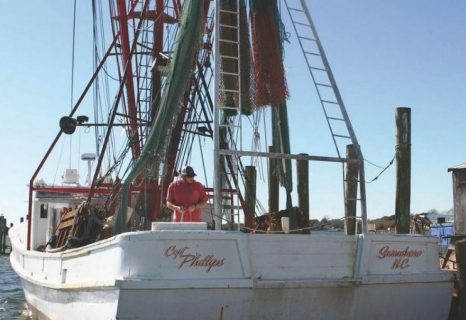
Opponents of proposed shrimp trawl limits not backing down from fight
There was one common point as local residents on opposing sides of a shrimp trawling issue reacted to news that additional restrictions for North Carolina shrimpers will likely be on the way. The N.C. Marine Fisheries Commission voted 5-3, with one member abstaining, on Thursday to approve a petition for rule-making from the N.C. Wildlife Federation, setting in motion a lengthy process of reviewing the rules proposed in the petition before a final decision is made. For commercial fishermen and those who work in the seafood industry, the long road ahead is one they are prepared to follow. “They are going to have a fight on their handssaid Tim Millis of B.F. Millis Seafood in Sneads Ferry. “People are not going to stand back. (The petition) is going too far.” Nancy Edens of Sneads Ferry, a North Carolina representative with the Southern Shrimp Alliance, attended the MFC meeting Thursday and was disappointed by the vote of the commission. Continued reading here 07:41

































